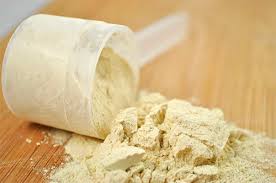
How many molecules can say their discovery won a Nobel Prize? The mighty nitric oxide can claim this honor. It plays such an important role in cardiovascular health, it was at the heart of the 1998 Nobel Prize in Physiology or Medicine.
While the award recognized the role of nitric oxide as a signaling molecule for the cardiovascular system (1), nitric oxide has been at the center of over 160,000 scientific articles showing its many remarkable health benefits (2).
Because nitric oxide (N.O.) is a vasodilator, it helps your blood vessels expand and relaxes your arteries. Nitric oxide also plays an essential role in:
• Healthy blood pressure
• Improved blood flow throughout the body
• Higher energy levels (thanks to better oxygen flow)
• Better athletic performance and recovery
• Healthy brain function (where it acts as a neurotransmitter)
So if you want to protect your heart, advance your athletic performance or have more natural energy, then you need to increase your nitric oxide levels. Especially since our nitric oxide production declines as we age.
The best way to boost your nitric oxide levels is through nitrate-rich plants and plant protein. You need both for optimal nitric oxide production. Here are some of the amazing foods that boost your N.O. levels naturally.
1. Leafy Greens
The path to heart health is paved with leafy greens. The number one food by weight for nitrates is arugula (480 mg per 100 grams). In fact, of the 10 most nitrate-rich foods on the planet, leafy greens hold six of those top spots.
What should you add to your salad or smoothie? Aside from arugula, spring greens (188 mg per 100 g) and butterleaf lettuce (200 mg per 100 g) give you the most heart-healthy nitrates.
Whichever way you choose to consume leafy greens, be sure to buy it organic. Otherwise, it could contain harmful pesticides.
2. Beets
Getting beets in your diet is another great way to increase your nitric oxide levels. Regular beets come in after leafy greens for nitrate levels, and may not be everyone’s favorite for taste, but they can mix well in a salad.
Beet juice meanwhile has been getting a lot of attention among athletes and bodybuilders for its ability to spike nitric oxide levels. And beet juice does come in second after arugula for nitrate content (279 mg per 100 g).
If you go the juice route for beets just watch out for the sugar content and make sure there are no artificial additives.
3. Green Herbs
Cilantro is an often underrated (and tasty) herb that contains powerful antioxidants like quercetin, helps to lower LDL (bad) cholesterol, can stimulate digestion, and it even supports detox. Aside from its long list of health benefits, cilantro is also a rich source of nitrates (247 mg per 100 g).
Another tasty green herb that boosts nitric oxide is basil. This fragrant herb packs 183 mg of nitrates per 100 g of leafy goodness.
4. Rhubarb
This stem vegetable is packed with healthy nitrates (281 mg per 100 g). It’s important to note that only the stem is edible, as rhubarb leaves are toxic.
Since it comes with a really tart taste, rhubarb is usually cooked and at least mildly sweetened. Try it stewed with some organic honey or maple syrup. Or make a healthy pie filling (it goes really well with strawberries) for a sweet-sour combination.
In addition to nitrates, rhubarb is full of fiber and plant-based calcium for heart health. It’s also a good source of vitamin C which is a potent antioxidant to help protect nitric oxide against free radical damage.
5. Spirulina
The superfood algae spirulina is full of vitamins and minerals, cell-protective chlorophyll and can improve nitric oxide levels.
Spirulina does this thanks to its high levels of plant protein. It’s 70% protein by weight, and that includes the amino acid L-arginine, which your body uses to make nitric oxide.
Getting spirulina in your diet can be somewhat of a challenge. The best way is to seek out a quality organic green juice powder that includes spirulina and several nitrate-rich foods too.
6. Dark Chocolate
Dark chocolate is a delicious way to boost your nitric oxide levels. And this was by no means a stretch of the truth just to include chocolate in this list.
In fact, a recent article in the US National Library of Medicine published evidence that suggests the flavanols in cocoa can help your body establish optimal nitric oxide levels (3).
Another study found that the flavanols in dark chocolate can directly increase nitric oxide mediated vasodilation (4). This in turn, can benefit the circulatory system and blood pressure.
Just remember that to get the benefits you need to get at least 70-80% dark chocolate. The darker the chocolate, the more flavanols and nitric oxide boost your body will get.
For Nitric Oxide Production, Pick Plants
Plant nitrates are not to be confused with animal nitrates. Animal nitrates are found in processed meats and when eaten they convert into harmful nitrosamines, which are linked to an increased risk of cancer.
One more way to boost N.O.? Get moving! Evidence suggests that regular exercise can significantly increase your body’s production of nitric oxide (5). And when you combine exercise with nitrate-rich foods, you’ll also be able to perform better at the gym and recover faster.
By increasing your body’s nitric oxide levels, you may be able to significantly improve the health of your cardiovascular system, boost your workouts, and get the nutrition you need for a long and healthy life.
Nutritional Data Source: NutritionFacts.org
















 Lucinda Miller, MH MRNI MGNI
Lucinda Miller, MH MRNI MGNI



